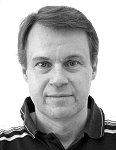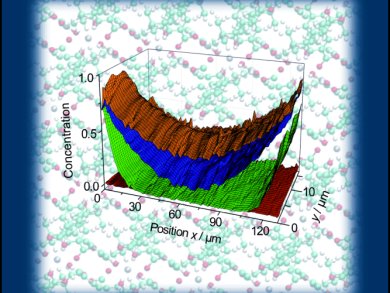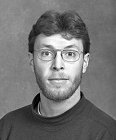Nachrichten aus der Chemie (the membership magazine of the GDCh) annually publishes trend reports in which authors spot and compile an overview of inspiring work and recent trends in the most important chemical disciplines.
ChemViews gives you an overview of the latest trend report, its authors and the literature collected.
Trends in Physical Chemistry 2012
D. Rolles, J. Lindner, P. Vöhringer
Time-resolved experiments using free electron lasers film chemical reactions on the femto and picosecond scale with atomic resolution.
Hydrogen bridges break and form on a picosecond time scale.
The associated structural dynamics can be monitored in real-time using 2-dimensional IR Spectroscopy.
► Full article (in German):
- Trendbericht Physikalische Chemie 2012,
D. Rolles, J. Lindner, P. Vöhringer,
Nachrichten aus der Chemie 2013, 61(3), 313–319.
DOI: 10.1002/nadc.201390089
► All 2012 trend reports on ChemViews
Authors
Daniel Rolles, born 1976, studied physics at the Technical University of Berlin, Germany, and the University of California, Berkeley, USA. He completed his Ph.D. in 2005 at the Fritz Haber Institute of the Max Planck Society in Berlin, Germany. After a postdoctoral research stay at the Advanced Light Source in Berkeley, CA, USA, in 2008, he returned to Germany, joining the Max Planck Advanced Study Group at the Center for Free-Electron Laser Science in Hamburg. Since January 2013 he has been head of a Helmholtz Young Investigators Group for Ultrafast Molecular Imaging at the Deutsches Elektronen-Synchrotron (DESY) in Hamburg.
 Jörg Lindner studied physics at the University of Hannover, Germany. He received his Ph.D. there in 1990 and worked as a research assistant there until 1999, excepting for a two-year research stay at the Joint Institute for Laboratory Astrophysics (JILA) in Boulder, CO, USA. Then he moved to the Max Planck Institute for Biophysical Chemistry in Göttingen, Germany. Since 2005 he has been a research associate at the Institute for Physical and Theoretical Chemistry, University of Bonn, Germany, and is working on hydrogen-bonded systems and solvated electrons.
Jörg Lindner studied physics at the University of Hannover, Germany. He received his Ph.D. there in 1990 and worked as a research assistant there until 1999, excepting for a two-year research stay at the Joint Institute for Laboratory Astrophysics (JILA) in Boulder, CO, USA. Then he moved to the Max Planck Institute for Biophysical Chemistry in Göttingen, Germany. Since 2005 he has been a research associate at the Institute for Physical and Theoretical Chemistry, University of Bonn, Germany, and is working on hydrogen-bonded systems and solvated electrons.
 Peter Vöhringer studied chemistry at the University of Göttingen, Germany, where he received his Ph.D. in 1991. After a two-year research fellowship at the University of Pennsylvania, USA, he joined the University of Karlsruhe, Germany, and completed his habilitation in 1999. From 1998 to 2003 he was head of a research group at the Max Planck Institute for Biophysical Chemistry, Göttingen, Germany. In 2004, he was appointed to the University of Bonn, Germany, where, since 2011, he has been chairman of the Collaborative Research Centre “Chemistry at Spin Centers”.
Peter Vöhringer studied chemistry at the University of Göttingen, Germany, where he received his Ph.D. in 1991. After a two-year research fellowship at the University of Pennsylvania, USA, he joined the University of Karlsruhe, Germany, and completed his habilitation in 1999. From 1998 to 2003 he was head of a research group at the Max Planck Institute for Biophysical Chemistry, Göttingen, Germany. In 2004, he was appointed to the University of Bonn, Germany, where, since 2011, he has been chairman of the Collaborative Research Centre “Chemistry at Spin Centers”.
His research focus is on the use of coherent nonlinear laser spectroscopy to investigate molecular dynamics in solvated phases.
References
Molecule Cinema: Experiments with Free-Electron Lasers
1) H. N. Chapman, P. Fromme, A. Barty et al., Nature 2011, 470, 73. DOI: 10.1038/nature09750
2) L. Redecke, K. Nass, D. P. DePonte et al., Science 2013, 339, 227. DOI: 10.1126/science.1229663
3) R. Neutze, R. Wouts, D. van der Spoel, E. Weckert, J. Hajdu, Nature 2000, 406, 752. DOI: 10.1038/35021099
4) C. M. Günther, B. Pfau, R. Mitzner et al., Nature Photonics 2011, 5, 99. DOI: 10.1038/nphoton.2010.287
5) A. Aquila, M. S. Hunter, R. B. Doak et al., Optics Express 2012, 20, 2706. DOI: 10.1364/OE.20.002706
6) M. Krikunova, T. Maltezopoulos, P. Wessels et al., J. Chem. Phys. 2011, 134, 024313. DOI: 10.1063/1.3528722; Phys. Rev. A 2012, 86, 043430. DOI: 10.1103/PhysRevA.86.043430
7) Y. H. Jiang, A. Rudenko, O. Herrwerth et al., Phys. Rev. Lett. 2010, 105, 263002. DOI: 10.1103/PhysRevLett.105.263002
8) V. S. Petrovic, M. Siano, J. L. White, Phys. Rev. Lett. 2012, 108, 253006. DOI: 10.1103/PhysRevLett.108.253006
9) J. Ullrich, A. Rudenko, R. Moshammer, Annu. Rev. Phys. Chem. 2012, 63, 635. DOI: 10.1146/annurev-physchem-032511-143720
10) F. Krasniqi, B. Najjari, L. Strüder, D. Rolles, A. Voitkiv, J. Ullrich, Phys. Rev. A 2010, 81, 033411. DOI: 10.1103/PhysRevA.81.033411
11) D. P. Woodruff, A. M. Bradshaw, Rep. Prog. Phys. 1994, 57, 1029. DOI: 10.1088/0034-4885/57/10/003
12) C. S. Fadley, Surf. Sci. Rep. 1993, 19, 231. DOI: 10.1016/0167-5729(93)90012-E
13) P. Johnsson, A. Rouzée, W. Siu et al., J. Phys. B: At. Mol. Opt. Phys. 2009, 42, 134017. DOI: 10.1088/0953-4075/42/13/134017
Two-Dimensional IR Spectroscopy and H-Bonding
1) A. Kandratsenka, D. Schwarzer, P. Vöhringer, J. Chem. Phys. 2008, 128, 244510. DOI: 10.1063/1.2945896
2) J. Bredenbeck, Nachr. Chem. 2006, 54, 104. DOI: 10.1002/nadc.20060540206
3) S. Knop, T. La Cour Jansen, J. Lindner, P. Vöhringer, Phys. Chem. Chem. Phys. 2011, 13, 4641. DOI: 10.1039/c0cp02143a
4) M. Olschewski, S. Knop, J. Seehusen, J. Lindner, P. Vöhringer, J. Phys. Chem. A 2011, 115, 1210. DOI: 10.1021/jp110729d
5) S. T. Roberts, K. Ramasesha, P. B. Petersen, A. Mandal, A. Tokmakoff, J. Phys. Chem. A 2011, 115, 3957. DOI: 10.1021/jp108474p
6) J. Hunger, L. Liu, K.-J. Tielrooij, M. Bonn, H. Bakker, J. Chem. Phys. 2011, 135, 124517. DOI: 10.1063/1.3643763
7) C. Greve, N. K. Preketes, R. Costard et al., J. Phys. Chem. A 2012, 116, 7636. DOI: 10.1021/jp303864m
8) M. Yang, L. Szyc, K. Röttger et al., J. Phys. Chem. B 2011, 115, 5484. DOI: 10.1021/jp110561d



